Chrysler 2013 Annual Report Download - page 36
Download and view the complete annual report
Please find page 36 of the 2013 Chrysler annual report below. You can navigate through the pages in the report by either clicking on the pages listed below, or by using the keyword search tool below to find specific information within the annual report.-
 1
1 -
 2
2 -
 3
3 -
 4
4 -
 5
5 -
 6
6 -
 7
7 -
 8
8 -
 9
9 -
 10
10 -
 11
11 -
 12
12 -
 13
13 -
 14
14 -
 15
15 -
 16
16 -
 17
17 -
 18
18 -
 19
19 -
 20
20 -
 21
21 -
 22
22 -
 23
23 -
 24
24 -
 25
25 -
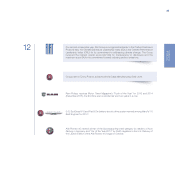 26
26 -
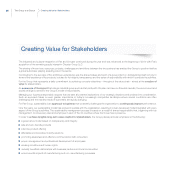 27
27 -
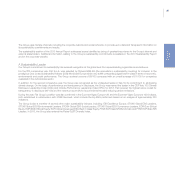 28
28 -
 29
29 -
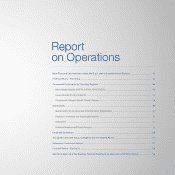 30
30 -
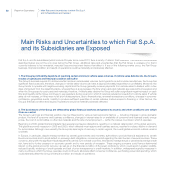 31
31 -
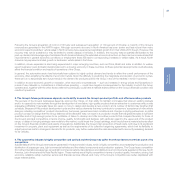 32
32 -
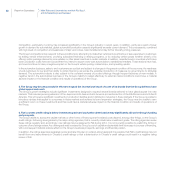 33
33 -
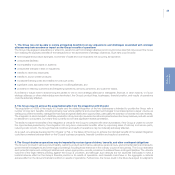 34
34 -
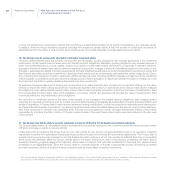 35
35 -
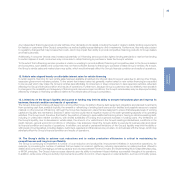 36
36 -
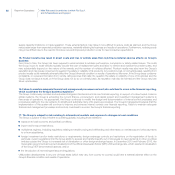 37
37 -
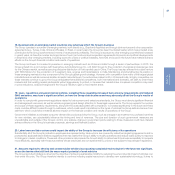 38
38 -
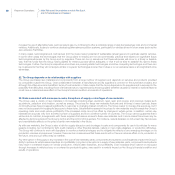 39
39 -
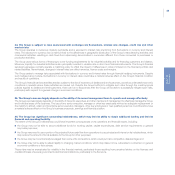 40
40 -
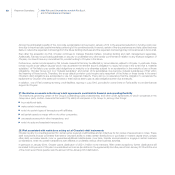 41
41 -
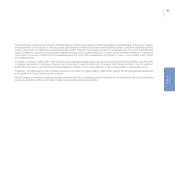 42
42 -
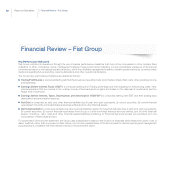 43
43 -
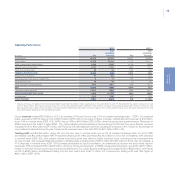 44
44 -
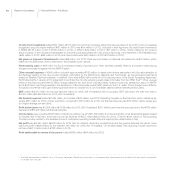 45
45 -
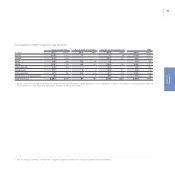 46
46 -
 47
47 -
 48
48 -
 49
49 -
 50
50 -
 51
51 -
 52
52 -
 53
53 -
 54
54 -
 55
55 -
 56
56 -
 57
57 -
 58
58 -
 59
59 -
 60
60 -
 61
61 -
 62
62 -
 63
63 -
 64
64 -
 65
65 -
 66
66 -
 67
67 -
 68
68 -
 69
69 -
 70
70 -
 71
71 -
 72
72 -
 73
73 -
 74
74 -
 75
75 -
 76
76 -
 77
77 -
 78
78 -
 79
79 -
 80
80 -
 81
81 -
 82
82 -
 83
83 -
 84
84 -
 85
85 -
 86
86 -
 87
87 -
 88
88 -
 89
89 -
 90
90 -
 91
91 -
 92
92 -
 93
93 -
 94
94 -
 95
95 -
 96
96 -
 97
97 -
 98
98 -
 99
99 -
 100
100 -
 101
101 -
 102
102 -
 103
103 -
 104
104 -
 105
105 -
 106
106 -
 107
107 -
 108
108 -
 109
109 -
 110
110 -
 111
111 -
 112
112 -
 113
113 -
 114
114 -
 115
115 -
 116
116 -
 117
117 -
 118
118 -
 119
119 -
 120
120 -
 121
121 -
 122
122 -
 123
123 -
 124
124 -
 125
125 -
 126
126 -
 127
127 -
 128
128 -
 129
129 -
 130
130 -
 131
131 -
 132
132 -
 133
133 -
 134
134 -
 135
135 -
 136
136 -
 137
137 -
 138
138 -
 139
139 -
 140
140 -
 141
141 -
 142
142 -
 143
143 -
 144
144 -
 145
145 -
 146
146 -
 147
147 -
 148
148 -
 149
149 -
 150
150 -
 151
151 -
 152
152 -
 153
153 -
 154
154 -
 155
155 -
 156
156 -
 157
157 -
 158
158 -
 159
159 -
 160
160 -
 161
161 -
 162
162 -
 163
163 -
 164
164 -
 165
165 -
 166
166 -
 167
167 -
 168
168 -
 169
169 -
 170
170 -
 171
171 -
 172
172 -
 173
173 -
 174
174 -
 175
175 -
 176
176 -
 177
177 -
 178
178 -
 179
179 -
 180
180 -
 181
181 -
 182
182 -
 183
183 -
 184
184 -
 185
185 -
 186
186 -
 187
187 -
 188
188 -
 189
189 -
 190
190 -
 191
191 -
 192
192 -
 193
193 -
 194
194 -
 195
195 -
 196
196 -
 197
197 -
 198
198 -
 199
199 -
 200
200 -
 201
201 -
 202
202 -
 203
203 -
 204
204 -
 205
205 -
 206
206 -
 207
207 -
 208
208 -
 209
209 -
 210
210 -
 211
211 -
 212
212 -
 213
213 -
 214
214 -
 215
215 -
 216
216 -
 217
217 -
 218
218 -
 219
219 -
 220
220 -
 221
221 -
 222
222 -
 223
223 -
 224
224 -
 225
225 -
 226
226 -
 227
227 -
 228
228 -
 229
229 -
 230
230 -
 231
231 -
 232
232 -
 233
233 -
 234
234 -
 235
235 -
 236
236 -
 237
237 -
 238
238 -
 239
239 -
 240
240 -
 241
241 -
 242
242 -
 243
243 -
 244
244 -
 245
245 -
 246
246 -
 247
247 -
 248
248 -
 249
249 -
 250
250 -
 251
251 -
 252
252 -
 253
253 -
 254
254 -
 255
255 -
 256
256 -
 257
257 -
 258
258 -
 259
259 -
 260
260 -
 261
261 -
 262
262 -
 263
263 -
 264
264 -
 265
265 -
 266
266 -
 267
267 -
 268
268 -
 269
269 -
 270
270 -
 271
271 -
 272
272 -
 273
273 -
 274
274 -
 275
275 -
 276
276 -
 277
277 -
 278
278 -
 279
279 -
 280
280 -
 281
281 -
 282
282 -
 283
283 -
 284
284 -
 285
285 -
 286
286 -
 287
287 -
 288
288 -
 289
289 -
 290
290 -
 291
291 -
 292
292 -
 293
293 -
 294
294 -
 295
295 -
 296
296 -
 297
297 -
 298
298 -
 299
299 -
 300
300 -
 301
301 -
 302
302 -
 303
303 -
 304
304 -
 305
305 -
 306
306 -
 307
307 -
 308
308 -
 309
309 -
 310
310 -
 311
311 -
 312
312 -
 313
313 -
 314
314 -
 315
315 -
 316
316 -
 317
317 -
 318
318 -
 319
319 -
 320
320 -
 321
321 -
 322
322 -
 323
323 -
 324
324 -
 325
325 -
 326
326 -
 327
327 -
 328
328 -
 329
329 -
 330
330 -
 331
331 -
 332
332 -
 333
333 -
 334
334 -
 335
335 -
 336
336 -
 337
337 -
 338
338 -
 339
339 -
 340
340 -
 341
341 -
 342
342 -
 343
343 -
 344
344 -
 345
345 -
 346
346 -
 347
347 -
 348
348 -
 349
349 -
 350
350 -
 351
351 -
 352
352 -
 353
353 -
 354
354 -
 355
355 -
 356
356 -
 357
357 -
 358
358 -
 359
359 -
 360
360 -
 361
361 -
 362
362 -
 363
363 -
 364
364 -
 365
365 -
 366
366
 |
 |

35
Report on
Operations
Any independent financing services provider will face other demands on its capital, including the need or desire to satisfy funding requirements
for dealers or customers of the Group’s competitors as well as liquidity issues relating to other investments. Furthermore, they may also subject
to regulatory changes that may increase their costs, which may impair their ability to provide competitive financing products to Group dealers
and retail customers.
Additionally, if consumer interest rates increase substantially or if financing service providers tighten lending standards or restrict their lending
to certain classes of credit, consumers may not be able to obtain financing to purchase or lease the Group’s vehicles.
To the extent that a financing services provider is unable or unwilling to provide sufficient financing at competitive rates to the Group’s dealers
and consumers, such dealers and consumers may not have sufficient access to financing to purchase or lease Group’s vehicles. As a result,
the Group’s vehicle sales and market share may suffer, which would adversely affect the Group’s financial condition and results of operations.
12. Vehicle sales depend heavily on affordable interest rates for vehicle financing
In certain regions, financing for new vehicle sales has been available at relatively low interest rates for several years due to, among other things,
expansive government monetary policies. To the extent that interest rates rise generally, market rates for new vehicle financing are expected
to rise as well which may make the Group’s vehicles less affordable to consumers or steer consumers to less expensive vehicles, adversely
affecting the Group’s financial condition and results of operations. Furthermore, because Group’s customers may be relatively more sensitive
to changes in the availability and adequacy of financing and macroeconomic conditions, the Group’s vehicle sales may be disproportionately
affected by changes in financing conditions relative to the vehicle sales of Group’s competitors.
13. Limitations on the Group’s liquidity and access to funding may limit its ability to execute its business plan and improve its
business, financial condition and results of operations
The Group’s future performance will depend on, among other things, its ability to finance debt repayment obligations and planned investments
from operating cash flow, available liquidity, the renewal or refinancing of existing bank loans and/or facilities and possible recourse to capital
markets or other sources of financing. Although the Group has measures in place that are designed to ensure that adequate levels of working
capital and liquidity are maintained, declines in sales volumes could have a negative impact on the cash-generating capacity of its operating
activities. The Group could, therefore, find itself in the position of having to seek additional financing and/or having to refinance existing debt,
including in unfavorable market conditions, with limited availability of funding and a general increase in funding costs. Any limitations on
the Group’s liquidity, due to decreases in vehicle sales, the amount of or restrictions in the Group’s existing indebtedness, conditions in the
credit markets, general economic conditions or otherwise, may adversely impact the Group’s ability to execute its business plan and impair
its financial condition and results of operations. In addition, any actual or perceived limitations of the Group’s liquidity may limit the ability or
willingness of counterparties, including dealers, customers, suppliers and financial service providers, to do business with the Group, which may
adversely affect the Group’s financial condition and results of operations.
14. The Group’s ability to achieve cost reductions and to realize production efficiencies is critical to maintaining its
competitiveness and long-term profitability
The Group is continuing to implement a number of cost reduction and productivity improvement initiatives in automotive operations, for
example, by increasing the number of vehicles that are based on common platforms, reducing dependence on sales incentives offered to
dealers and consumers, leveraging purchasing capacity and volumes between Fiat and Chrysler and implementing World Class Manufacturing,
or WCM, principles. The Group’s future success depends upon its ability to implement these initiatives successfully throughout its operations.
In addition, while some of the productivity improvements are within its control, others depend on external factors, such as commodity prices,
